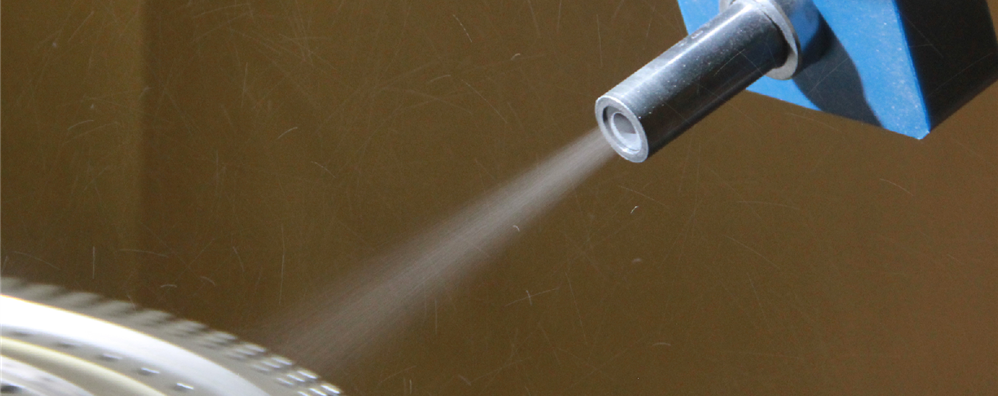
28 Mar Shot Peening vs. Shot Blasting
Shot Peening vs. Shot Blasting: Which Surface Treatment Is Right for You?
Surface finishing is a vital step for parts used in a wide variety of industries. Different finishing processes can be used to clean, deburr, strengthen or achieve a number of other outcomes that help components consistently perform their intended function. The correct finishing can significantly lengthen the lift of the part and enhance its performance, but the wrong finishing method can have a detrimental effect and cause them to break quickly or perform poorly. Learning the difference between shot peening and shot blasting can play a significant role in deciding the finishing process that works best for your specific parts and could save you a lot of time and annoyance in the future.
Shot Peening Process
Shot peening is a finishing process that can significantly increase the life and durability of metal parts. But what exactly is shot peening? It is the process of propelling shot — usually made of steel, stainless steel, ceramic or glass — against the surface of an object, resulting in tiny indentations like that of a peening hammer. These indentations cause the metal surface of the part to yield to tension, creating compressive stress below the indentations. The benefits of shot peening include greater part strength and longevity, as well as resistance to:
- Corrosion fatigue
- Fretting
- Galling and erosion caused by cavitation
- General fatigue failures
- Hydrogen assisted cracking
- Stress corrosion cracking
Would your parts benefit from Eaglemaster’s shot peening services? Learn more or request a quote today!
When to Use Shot Peening
While a huge number of parts across a wide range of industries would benefit from shot peening, in general, the components that benefit most from the process include those that have tensile stresses. Shot peening replaces tensile with beneficial compressive stress, as well as parts that need hardening, lengthened service life and crack mitigation. These sorts of parts are often found in aerospace, automotive defense, medical and manufacturing applications.
Shot Blasting Process
Shot blasting is also a technique that uses shot media at high velocity to strike the surface of parts. However, the purpose of shot blasting is often more of an intermediary stage, and the media is generally made from stainless steel or carbon. Shot blasting is excellent for applications like:
- Cleaning surface contaminants
- Cosmetic finishing
- Deburring
- Deflashing
- Descaling
- Removing rust
- Texturing
Parts that are going to be moved on to additional manufacturing or finishing processes are often shot blasted to efficiently clean and prepare them for that next step.
Learn more about Eaglemaster’s shot blasting process or reach out to request a quote for your specific project.
When to Use Shot Blasting
Since shot blasting is a somewhat abrasive process, it is best suited for durable metal surfaces like aluminum, steel, titanium, stainless steel and iron, amongst others. Shot blasting is an economical way to clean parts, making it a popular choice in industries where metal parts need to be repainted, have rust removed or polished, such as automotive, manufacturing or construction.
Key Differences Between Shot Peening and Shot Blasting
While the similarities between shot blasting and shot peening are easy to spot, it is important you choose the right technique for your particular parts. Keep in mind that shot peening is a much more technical and specific method that is regulated by industry standards; there are many shot peening standards to choose from, but the exact specifications must be met for each project.
In contrast, shot blasting is not regulated by industry-standard specifications so it can be utilized to achieve a desired result, such as cleaning, deflashing or polishing, without needing to consider standardized regulations.
In broad terms, shot peening should be considered for:
- Increasing compressive stress
- Strengthening parts
- Lengthening service life
While shot blasting is more applicable to:
- Aesthetic improvements
- Cleaning
- Preparation for further finishing or manufacturing
Factors to Consider When Choosing Between Shot Peening and Shot Blasting
The first major consideration you should make when choosing between shot blasting and shot peening is how close your part will be to the end user after this process. If it is still going to go through more manufacturing or finishing, shot blasting is probably the way to go. If your parts are going to be more or less ready for strenuous use right away, it’s probably best to find the shot peening standard that your particular components will require.
Another thing to consider is the actual material of your parts. While there is a good amount of crossover materials that are suitable for both processes, if there is any worry that shot peening will be too aggressive for your parts, seek further advice or another process.
Your Shot Blasting & Shot Peening Experts
Finding the correct finishing process for your parts is a vital step in the manufacturing process that should not be overlooked. Take the time to consider whether your parts need the strengthening, hardening and crack-resisting advantages of shot peening, or if the less strenuous surface cleaning shot blasting process is best for what you need. Either way, Eaglemaster is here to help. Contact us today to learn more about our shot peening and shot blasting services, get a quote or ask any questions that you may have.


